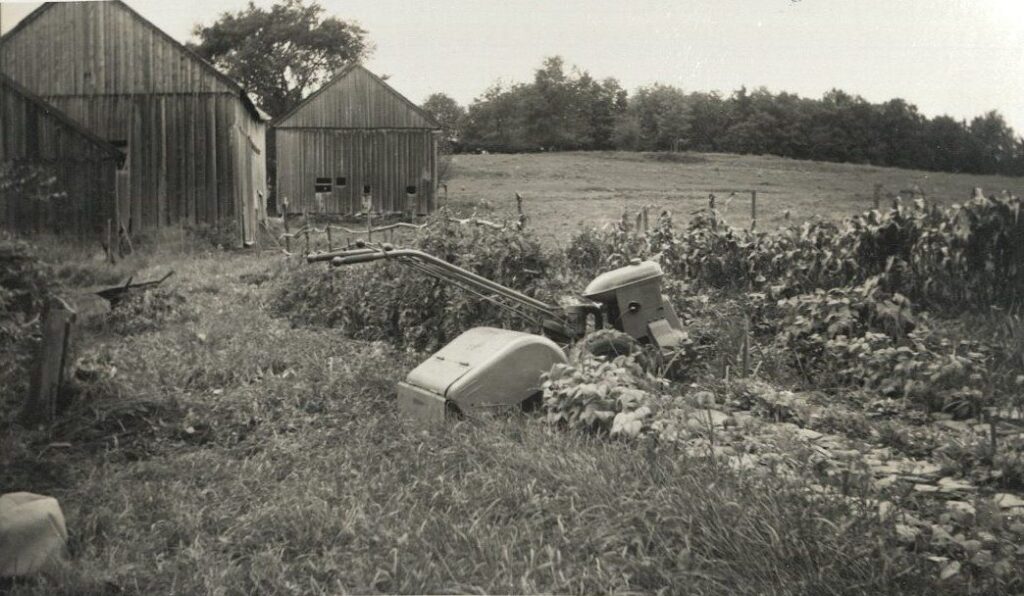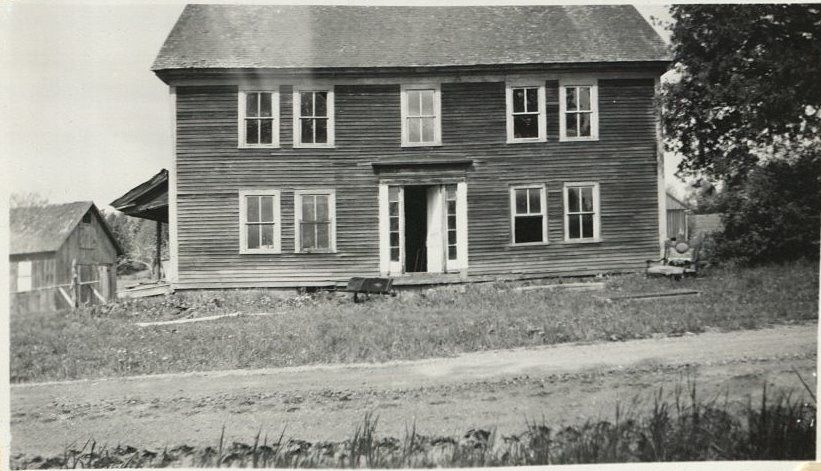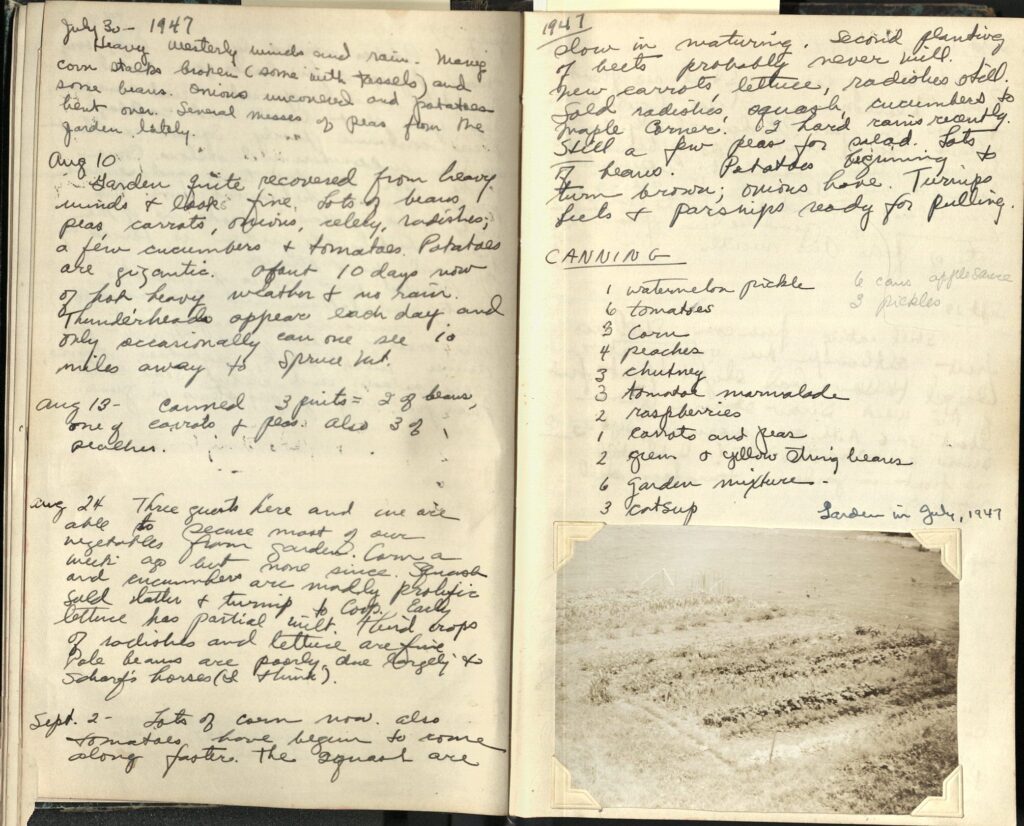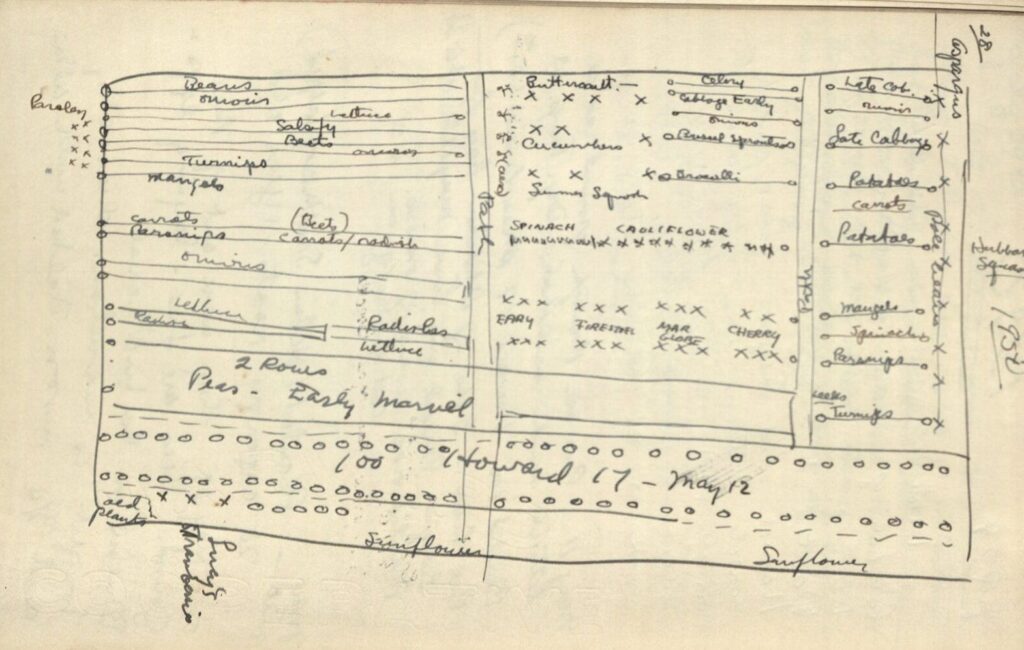In the fall of 1946, Robert F. Stoel (who later changed his last name to Stowell) joined the University of Vermont English department as an instructor. In June 1947, Stowell purchased 18 tillable acres with buildings and a spring on Old West Road near Kent’s Corners in Calais, Vermont. The property had once been part of the Calais Town Farm, also known as the Calais Poor Farm. Stowell used a blank notebook to record work and life on his Poor Farm from 1947 to 1953. The notebook is one of the many diaries and journals in our small bound manuscript collection.
Stowell and his wife Ann were committed to simple living and voluntary poverty, and in Calais, that meant growing as much of their own food as possible. Most of the journal is devoted to records of planting successes and failures, garden meals, and harvesting and putting food by for the winter, as the entries on the two pages below demonstrate.
On July 30, 1947, Stowell recorded that wind and rain broke the corn stalks and some beans, and on August 10, that there had been ten days of hot heavy weather and no rain. The garden flourished nonetheless, with lots of beans, peas, carrots, onions, celery, radishes, cucumbers, tomatoes and gigantic potatoes. The bounty provided dinner for visitors, root crops and canned fruits and vegetables for the winter months, and surplus squash, cucumbers and turnips to sell.
Each season, Stowell drew plans recording what crops were planted in the garden. The plan for the 1950 garden includes some information about specific varieties. A large area was devoted to Early Marvel peas, and the tomato section included Firestone, Marglobe (disease resistant and good for canning) and cherry tomatoes.
 Stowell planted Red Delicious and Yellow Transparent apple trees during his second gardening season in Calais, suggesting a long-term commitment to the property. However, the garden records end abruptly with an entry in April 1953. The Stowells sold the Poor Farm in July 1953, and by 1954 the family was farming land in the nearby town of Cabot.
Stowell planted Red Delicious and Yellow Transparent apple trees during his second gardening season in Calais, suggesting a long-term commitment to the property. However, the garden records end abruptly with an entry in April 1953. The Stowells sold the Poor Farm in July 1953, and by 1954 the family was farming land in the nearby town of Cabot.
A brief article in the October 1948 issue of American Notes & Queries announced that Robert Stowell, operator of the Poor Farm Press in Calais, Vermont had plans to print “a number of booklets on country living and cooperative communities. Some of these are to be concerned with subsistence farming, combining both philosophy and practical advice.”
Although Stowell did not print the booklets as planned, the Calais Poor Farm garden and journal contributed to his book Toward Simple Living: A Theory and Practice of Voluntary Poverty (first published by the Solitarian Press in Hartland, Vermont in 1953 and reprinted in 1955), where he wrote about the potential benefits of vegetable gardens.
A garden in good soil measuring one hundred by one hundred feet will supply a family of four with all their vegetables for a year. A farm of from five to twenty acres of fairly good land can, with hard work and intelligent husbandry, supply simple living to a small family. A man growing food, concerned that his life be in good heart, is participating in the life process itself.

An undated garden photo tucked into the journal features a garden tractor. In Toward Simple Living, Stowell shared his thoughts about the tractor, writing “A garden tractor once seemed necessary to my happiness. Within days I was its slave, hauled about by it, harassed by its constant demands for attention (gas, oil, air, parts).”
Stowell, Ann and their two children moved to New Zealand in 1961. Writing from New Zealand, Stowell told readers of the October 1967 issue of Green Revolution, an Ohio newsletter for homesteaders, on-to-the-landers and do-it yourselfers, “We are writing a book, Green Mountain Homestead … about finding and developing a self-sufficient homestead on an abandoned farm in Vermont” and shared one of the chapters, A Lady Named Jess.
Submitted by Prudence Doherty, Public Services Librarian



